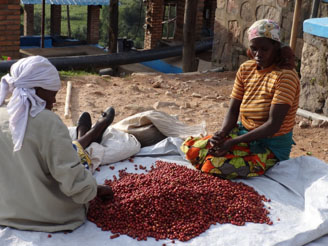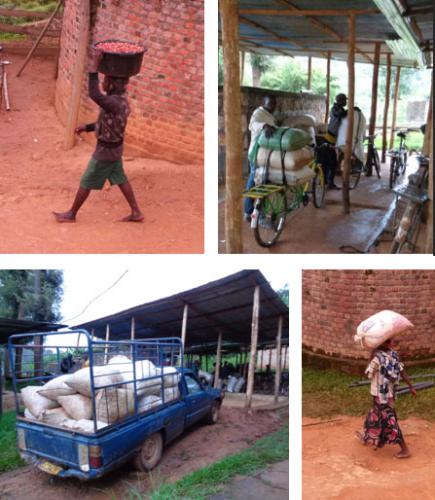How to Determine the Cost of Production for Fully-Washed Coffee in Rwanda?
The study describes a methodology and quantitative estimation process that can be used to estimate the values for household labor, wage labor, equipment and purchased inputs in Rwanda and other coffee producing countries.
By Ruth Ann Church and Daniel C. Clay
 Summary from: Feed the Future Innovation Lab for Food Security Policy Research Paper 33, October 2016
Summary from: Feed the Future Innovation Lab for Food Security Policy Research Paper 33, October 2016
The major components of cost of production are household (unpaid) labor, wage labor, equipment (e.g., pruning shears, sprayers, masks) and purchased inputs (fertilizer, pesticide, mulch, etc.). The study describes a methodology and quantitative estimation process that can be used to estimate the values for each of these components in Rwanda and other coffee producing countries with predominantly smallholder production. Applied to Rwanda, the estimation procedures arrive at mean and median cost of production values of 177 RWF/KG and 122 RWF/KG cherry, respectively (for 2015). These costs for many farmer groups are higher than the average cherry prices they received which were typically 150 – 170 RWF/KG in 2015. This finding has serious implications for the long term sustainability of Rwanda’s coffee sector.
Labor costs make up the largest share of farmers’ costs, averaging 75%. While this confirms findings from elsewhere in the industry, the breakdown of wage labor at 41% of total costs, compared to household labor at 33% of total costs is a unique contribution.
With this research on costs of production, those who set cherry prices in Rwanda and those who purchase coffee anywhere in the coffee value chain are better able to adjust the incentive structure to motivate Rwanda’s coffee farmers to invest in their coffee plantations and to raise their productivity levels.

Photo: Coffee transportation is one of the many costs for farmers, but not as significant as expected. The bags weigh approximately 40lb each. Farmers walk as much as 6 miles to deliver coffee. Bicycle and truck routes can be much farther. Photo credit: Ruth Ann Church.



 Print
Print Email
Email